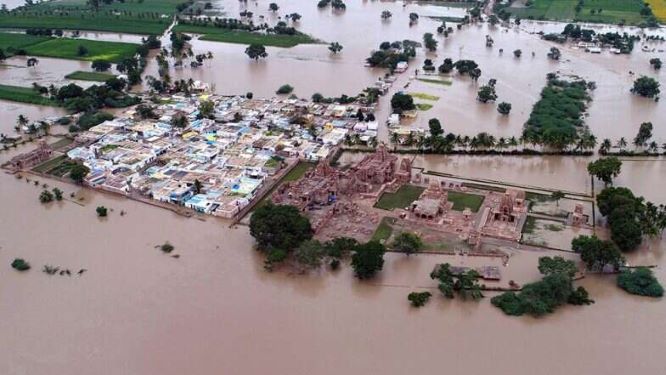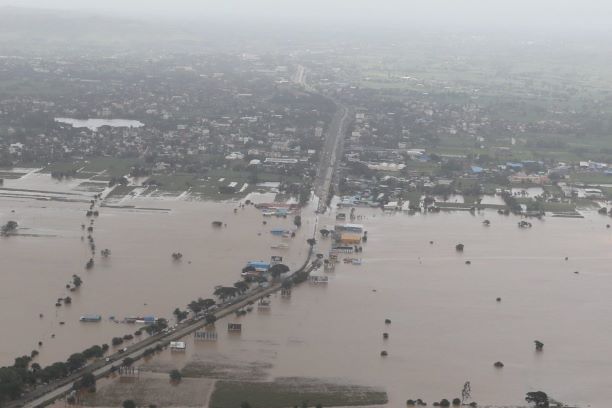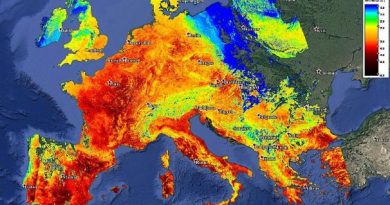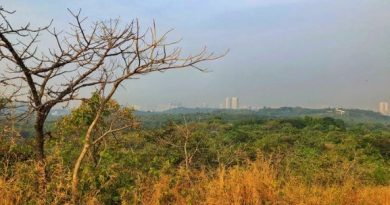Drinking Water Still a Problem Despite Floods in South India
 Flood water has inundated vast areas of North Karnataka
Flood water has inundated vast areas of North Karnataka
Western India has much to thank the rains despite flooding in some areas. The rains for three consecutive days has helped Rajkot get enough water to meet its drinking water need for the year. According to Rajkot Municipal Corporation (RMC), due to the ample rains all three major reservoirs which supply drinking water to Rajkot received a significant inflow of floodwater. The RMC data suggest that the city received nearly 400 mm rainfall in three days from Friday to Sunday.
Nyari -1 dam, one of the key reservoirs of water, is full while Aji-1 is just six feet below the full level. Bhadar-1 dam has reached the 22.90 feet water level mark with 2,600 million cubic feet full water capacity. Excess floodwater over this mark will be released for irrigation.
While rains have nearly solved drinking water woes in the west, the story is quite different for southern India. Latest reports emanating from the state of Karnataka suggest that areas such as Kushalnagar, Mullusoge, Guddehosuru and Koodumangaluru Gram Panchayats, which have been facing acute shortage of drinking water for the last five years, continue to suffer.
People still are queuing up in front of the clean drinking water unit near the community health centre in Kushalnagar town to collect drinking water. These villages, like many others, are dependent on river Cauvery for drinking water.

With the monsoons in full intensity, the Cauvery river has been flowing above the danger levels. Flooding in Karnataka has now left 40 people dead and 400,000 displaced since it began earlier this month.
Further heavy rain over the last few days. Humchadakatte in Shimoga Distric recorded 390mm of rain in 24 hours to 10 August, according to India Meteorological Department (IMD) figures. Kammardi in Shivamogga District recorded 230 mm of rain in 24 hours to 11 August, 2019.
India’s Central Water Commission (CWC) said on 11 August that the Tungabhadra river is at “Severe to Extreme Flood Situation” in the districts of Shivamogga, Koppal, Davangere, Ballari.
The Dudhganga river at Sadalga in Belgaum dsitrict is at a record high of 540.58 metres, beating the previous high of 538.9metres set in 2005.
The floods have caused heavy damage to the pipeline which connects the drinking potable water from the Water Board in many areas. The damage has stalled the supply of drinking water.
The floods have also disrupted electricity supply to many areas exacerbating the problem. This has forced the Water Board to supply water directly to these villages on a daily basis. The scarcity of clean water has forced the villagers of Kushalnagar to resort to using rainwater for cleaning purpose. Many have been displaced as their houses remain inundated due to floods. With only one functioning Shuddha drinking water units in Kushalnagar town, people have been under duress as other water units are either defunct or submerged in the floodwater.
Image courtesy: Floodlist




